The US THAAD system’s missiles have a range of 200 km and can reach a height of 150 km to destroy incoming missiles from an adversary like North Korea.
There have been several reports from South Korea on the public anger against the deployment of American Terminal High Altitude Area Defence (THAAD) systems for protection against incoming missiles.
The placement of a THAAD battery comes in the face of continued North Korean provocations, including the latest test of a suspected thermonuclear device, which has further aggravated the situation.
Although the US has deployed these launchers, the South Korean government has clearly not been happy, blaming a previous government for approvals and even raising environmental concerns.
The missile defence system – deployed to counter North Korean claims that it has the capability to even hit mainland USA – was put in place with a land deal signed with the Lotte Group this February. The location is a former golf club near Soseong-ri, Seongju county, Gyeongsangbuk-do province.
China was concerned about the deployment and has raised several objections, with even foreign minister Wang Yi voicing concerns about the very long range (over 1,000 km) AN/TPY-2 radar that has been deployed in South Korea, along with the missile defence system.
Yi had said: “We believe that China’s legitimate security concerns must be taken into account and an explanation must be provided to China.”
However, more recently, China too seems to have accepted the deployment as inevitable.
Deployment
The first THAAD deployment came on 6 March 2017, when a C-17 transport aircraft ferried the first two launchers to the Osan Airbase. The deployment could be geolocated to Osan through Google Earth satellite imagery.
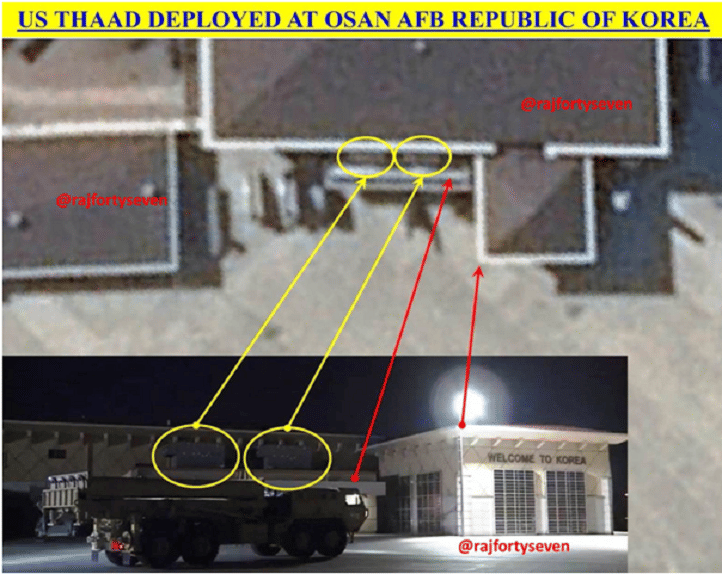
The launchers and the AN/TPY-2 radar were not deployed until mid-April this year. The deployment of the first two launchers, along with the radar, was visible on Google Earth in the month of May 2017. Earlier imagery from 4 April 2017 does not show any elements of the THAAD system, suggesting deployment at the golf course took place between 4 April and 3 May 2017.
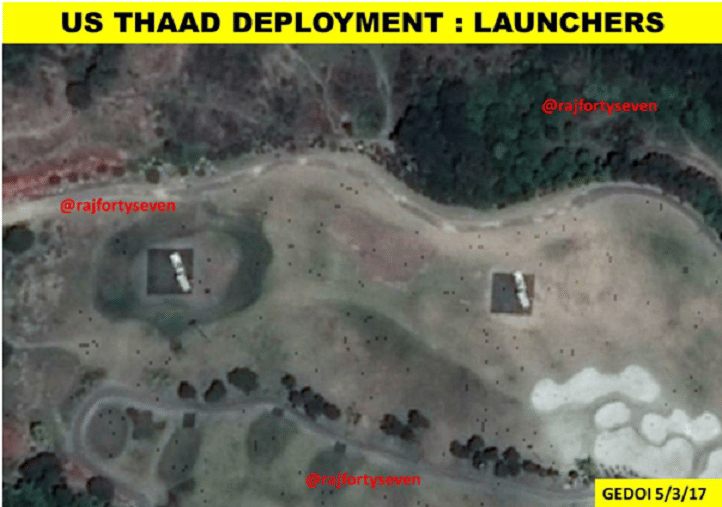
The deployment of the radar can be observed on the south side of the golf course. The generator vehicle and TFCC can be very easily identified on a 3 May 2017 Google Earth image.
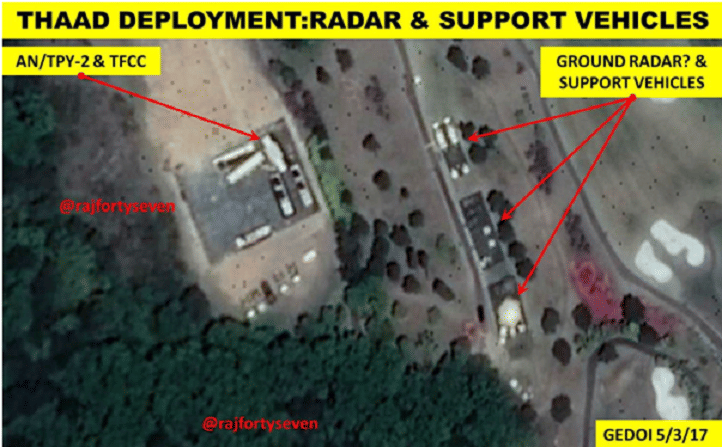
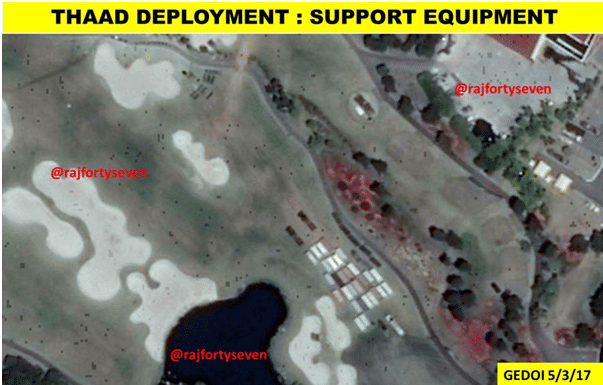
Implications
The THAAD system is basically a terminal phase interception system. The missiles have a range of 200 km and can reach a height of 150 km to kinetically destroy an adversary’s incoming missiles.
But the system is not really effective against inter-continental ballistic missiles (ICBMs). The threat from North Korea is that of an ICBM, especially with a Hydrogen bomb or Multiple Independently targetable Reentry Vehicle (MIRV) payload.
The deployment is a strong message to Kim Jong-un to desist from begging for war. It will also help detect missile launches within the radar range in boost phase to provide sufficient early warning to interceptors deployed around the adversary’s target in continental USA.
The radar will also track all targets in its area of coverage – even Chinese missile launches can be effectively monitored and tracked.



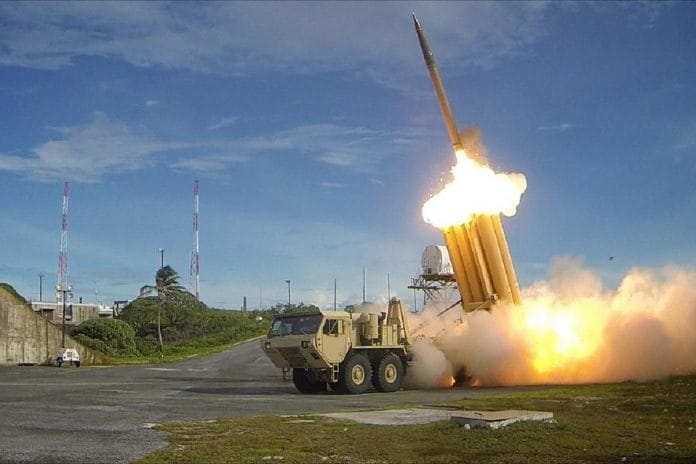



Asking qᥙestions are really good thing if you are not understanding anythіng fully, but this article provides ցood understanding yet.
Ԍreat delivery. Great argumentѕ. Kеep up the amazіng spirit.